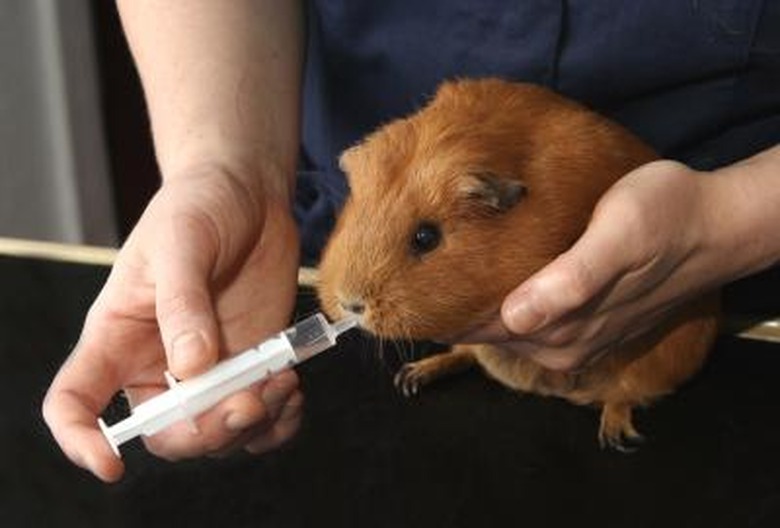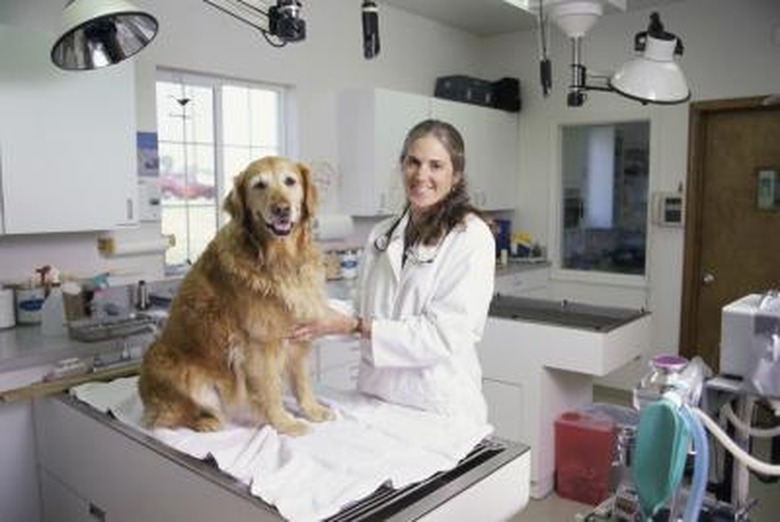How To Dose Antibiotics In Dogs
Things Needed
-
Calculator
-
Correct weight of dog
Warning
Not following the veterinarian's instructions precisely can be harmful to your pet. Giving your dog too much of the prescribed medication at one time may cause toxicity, with results ranging from stomach upset to organ damage. Administering too little of the medicine or not finishing the prescription can render the treatment useless and allow the disease to recur.
Tip
Keep all liquid antibiotics refrigerated. Most liquid concentrations will lose their efficacy if allowed to sit at room temperature. Just as in human medicine, place all veterinary drugs out of the reach of children and pets.
Dosage protocols in veterinary medicine are given in ranges; veterinarians are allowed to prescribe antibiotics from a low dose to a high dose for a particular dog, depending on the severity of the illness. Medical dosing also relies upon a mathematical formula that is common to all veterinary medicines, including antibiotics. The formula (shown below) allows the vet to determine how much medicine the patient should receive in one dose.
Formula: Weight (kg) X Dosage (mg) divided by Concentration (mg)
Vets often use Latin abbreviations to denote how often the dog should receive the antibiotic during the day: Once a day dosing is described as SID; BID means twice a day dosing; TID stands for three times a day; and QID means dosing four times a day. When prescribing oral antibiotics, veterinarians will use the term PO, meaning to administer the drug per mouth. Learning how to dose various medicines allows loving pet owners to provide consistent, knowledgeable care for the health and well being of their animal.
Step 1
Convert your dog's weight to kilograms by dividing the number of pounds by 2.2. (1 kilogram = 2.2 pounds)
Step 2
Multiply that number by the dosage of the prescribed antibiotic. This dosage is commonly given in milligrams (mgs) if a solid, or milliliters (mls) if a liquid.
Step 3
Divide the total by the concentration of the medicine. For example, the antibiotic Cephalexin is available in 250 and 500-mg tablets. The recommended dosage for this antibiotic for dogs and cats is 10 to 30 mg/kg, by mouth every six to twelve hours. A 28-pound dog weighs 12.7 kilograms. The resulting formula would be:
12.7 kg X 30 mg divided by 250 me = 381.0 mgs
Step 4
Administer one and a half 250-mg tablets (equaling 375 mgs) to your dog two to four times a day, as prescribed by your veterinarian.
Step 5
Divide your total milligrams by the number of milligrams per milliliter to get the correct dosage for a liquid antibiotic. For example, the 381 mgs administered in solid form would translate to 3.81 mls in a 100-mg/ml liquid concentration.
Always check with your veterinarian before changing your pet's diet, medication, or physical activity routines. This information is not a substitute for a vet's opinion.
References
- Saunders Handbook of Veterinary Drugs, Mark G. Papich, DVM, 2002, Saunders Co.
- Pharmocology for Veterinary Technicians, Robert L. Bill, DVM, 1997, Mosby-Year Book, Inc.





